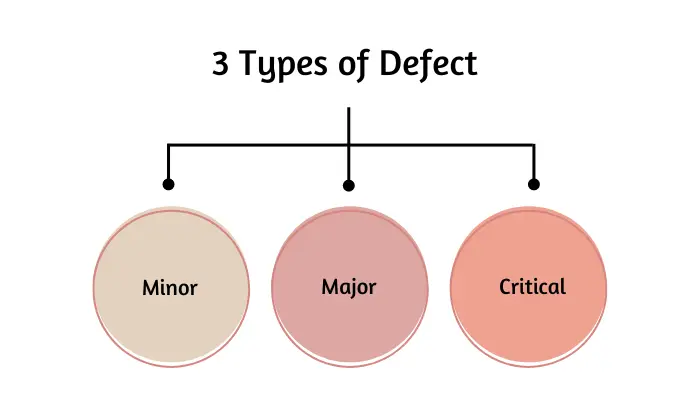Types of defects in the garment industry primarily include sewing, color, sizing, and fabric flaws. These defects can significantly impact product quality and customer satisfaction.
The garment industry, a cornerstone of global fashion, faces the constant challenge of maintaining high-quality standards. Defects in garments not only affect the aesthetic appeal but also the functionality and durability of the clothing item. Ensuring the production of defect-free garments is crucial for manufacturers to build a reputable brand image and foster customer loyalty.
Quality control measures are rigorously implemented to identify and rectify these defects before the products reach the market. As consumer expectations continue to rise, the garment industry invests in advanced technologies and skilled workforce training to minimize the occurrence of these defects. This commitment to quality not only enhances the product’s marketability but also contributes to sustainable business growth.
What is Defect?
Defects in the garments industry refer to a product that is not what it should be per the buyer’s requirement. In other words, defects do not conform to the buyer’s needs. These defects can impact the overall quality and appearance of the final product and may result in customer dissatisfaction.
A defect in manufactured garments is the presence of an unnecessary feature in the product or an Absence of required characteristics or absence of necessary characteristics, such as skip stitch, broken stitch, puckering, spot, hole, label mistake, etc.
3 Type of Defects
- Minor
- Major
- Critical

1. Minor Defects
That defect does not reduce usability and needs to be more obvious than one. A thorough inspection will find defects and lower sales like foreign yarn, slub, knot, small spots, slight bends, light signing marks, etc.
2. Major Defects
Defects that reduce usability and are not salable and readily available to customers Caught in the eye. Like Broken Stitch, Puckering, Spot, Hole, Label Mistake, Size Mistake, Printing spots, hang tag mistakes, etc.
3. Critical Defects
Defects that are not safe for a user or may cause damage/danger to life. A critical defect may compromise safety or cause annoyance or concern. Defects that are present in the product are prohibited by international and domestic law. Critical defects: broken needles, sharp points, broken buttons, sharp corners of velcro, or any Insect.
Causes of Defects in Garments
Manufacturing Process Issues: Manufacturing process issues, such as inadequate machinery maintenance or improper handling of materials, can lead to defects in garments during production.
Material Quality Problems: Substandard materials or discrepancies in material quality can result in defects, affecting the durability and appearance of the final product.
Human Error: Human error, including mistakes in cutting, stitching, or finishing processes, contributes significantly to defects in garments.
Strategies to Minimize Defects
Training and Skill Development: Investing in employee training and skill development programs enhances the workforce’s ability to identify and rectify defects effectively.
Technology Integration: Leveraging advanced technologies such as automated inspection systems and digital quality management tools streamlines defect detection and prevention processes.
Supplier Relationship Management: Establishing robust relationships with suppliers ensures consistent quality of raw materials, reducing the likelihood of defects in garments.
Future Of Quality Control In Garments
The Future of Quality Control in Garments is changing fast. New technologies are shaping how we ensure our clothes are top-notch. Let’s dive into how the future looks.
Predictive Quality Analytics
Imagine knowing a problem before it happens. Predictive Quality Analytics makes this real. It uses data to predict and prevent defects. This means fewer mistakes and better clothes.
- Data analysis spots patterns leading to defects.
- Advanced software predicts issues before they occur.
- Teams fix problems early, saving time and money.
Sustainable Manufacturing And Quality
Sustainable Manufacturing is the future. It’s all about making clothes without harming our planet. This approach also focuses on maintaining high-quality standards.
Key points include:
- Using eco-friendly materials reduces waste.
- Energy-efficient processes cut down on carbon emissions.
- Quality control ensures long-lasting garments.
Conclusion
The garments industry quality is the main priority of quality control measures, inspections, and testing procedures to detect and rectify defects, ensuring that products meet the required quality standards and deliver a positive consumer experience.
Also Read: The Role Of Quality Control In Garments Industry (QC)
FAQs (Frequently Asked Questions)
What are the defects in garments?
A Defect in the garments industry refers to a product that is not what it should be per the buyer’s requirement. In other words, defects do not conform to the buyer’s needs. These defects can impact the overall quality and appearance of the final product and may result in customer dissatisfaction.
How many types of defects are there?
There are 3 types of defect
1. Minor
2. Major
3. Critical
What is Minor Defects
That defect does not reduce usability and needs to be more obvious than one. A thorough inspection will find defects and lower sales like foreign yarn, slub, knot, small spots, slight bends, light signing marks, etc.
What is Major Defects
Defects that reduce the usability and are not salable and readily available to customers Caught the eye. Like Broken Stitch, Puckering, Spot, Hole, Label Mistake, Size Mistake, Printing spots, hang tag mistakes, etc.
Critical Defects
Defects that are not safe for a user or may cause damage/danger to life. A critical defect may compromise safety or cause annoyance or concern. Defects that are present in the product are prohibited by international and domestic law. Critical defects: broken needles, sharp points, broken buttons, sharp corners of velcro, or any Insect.


